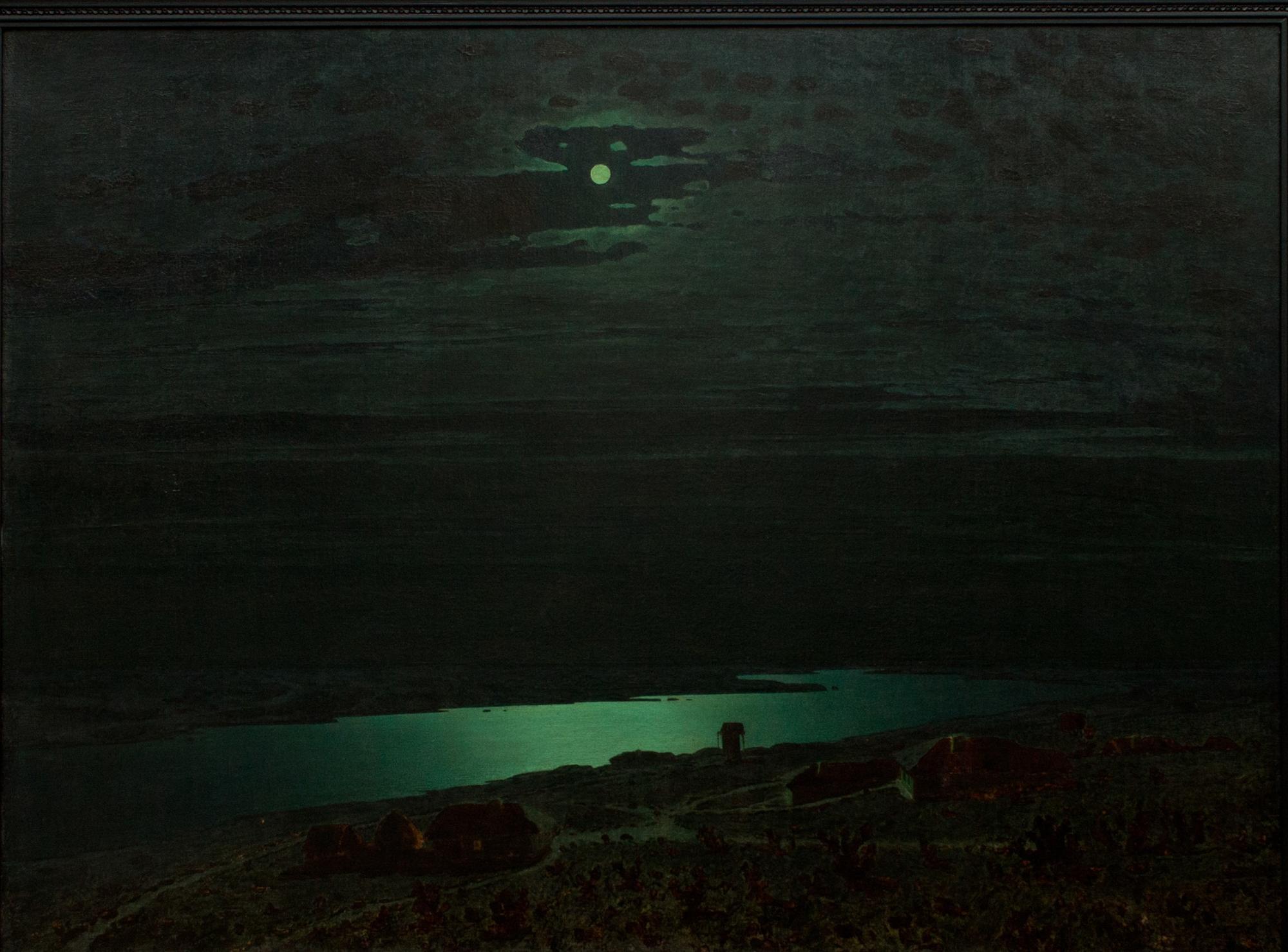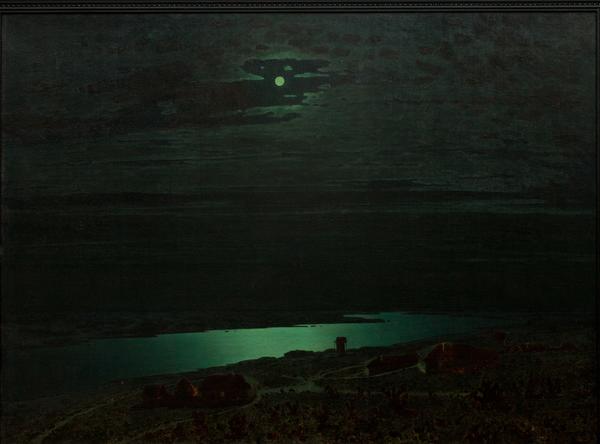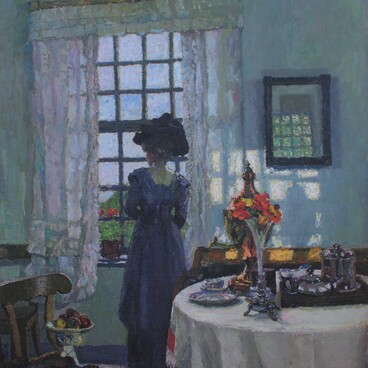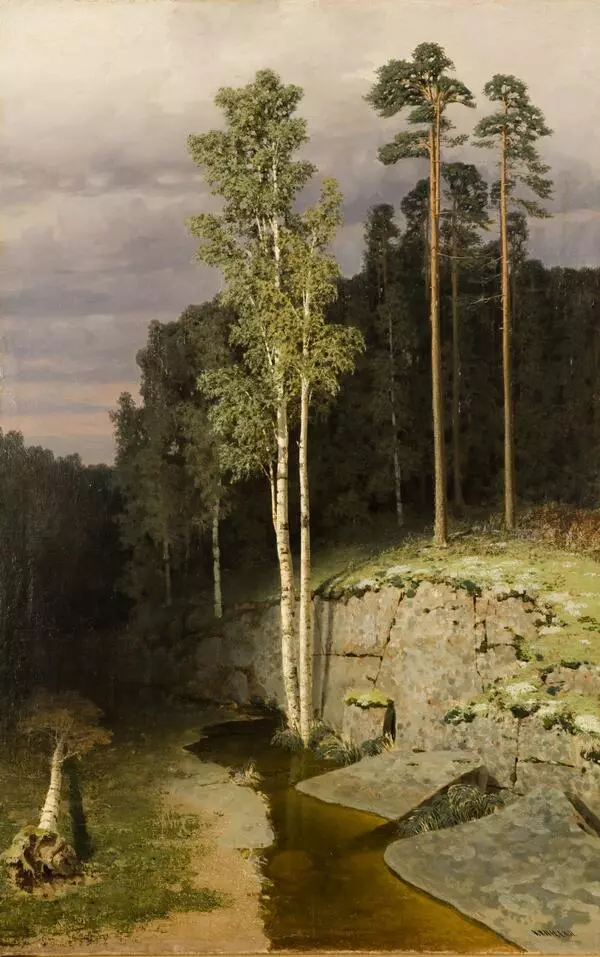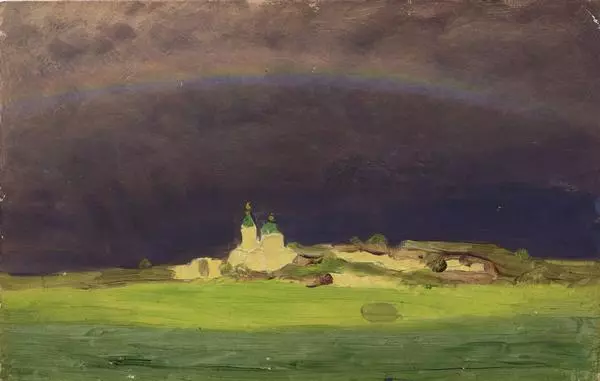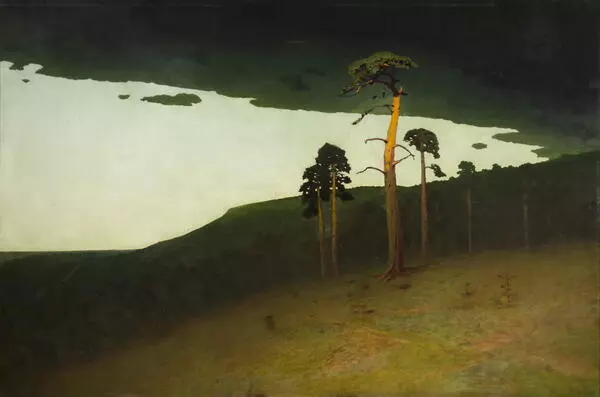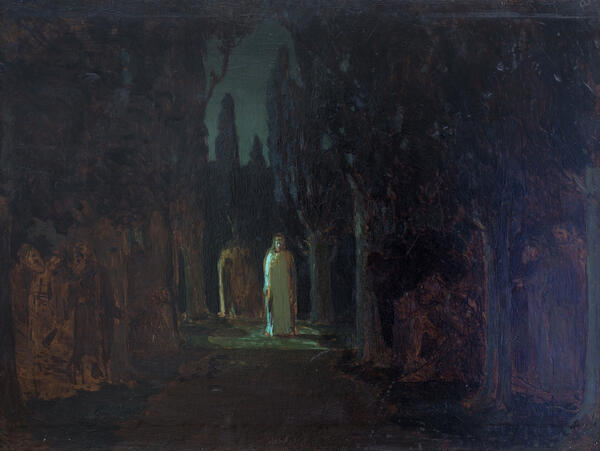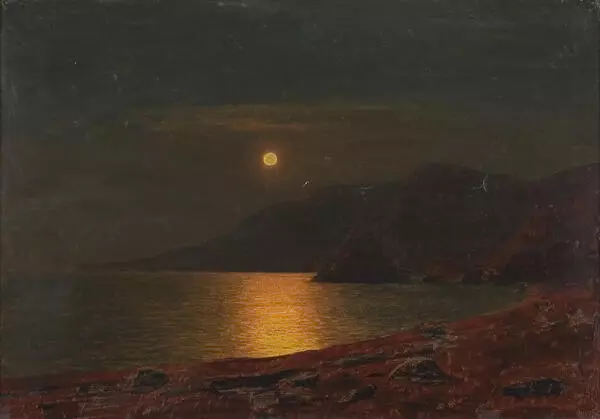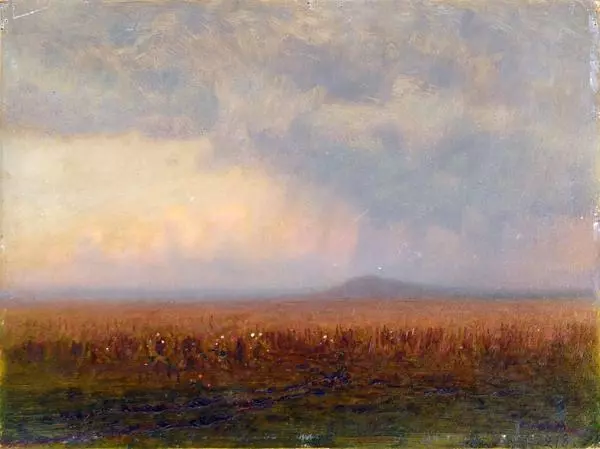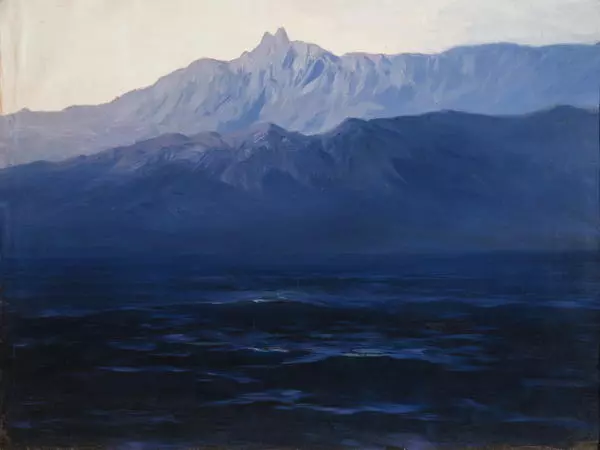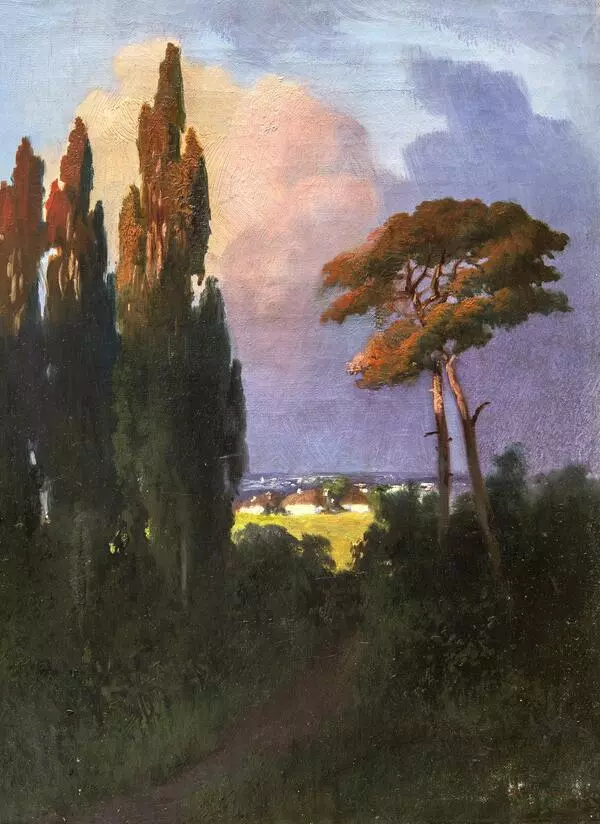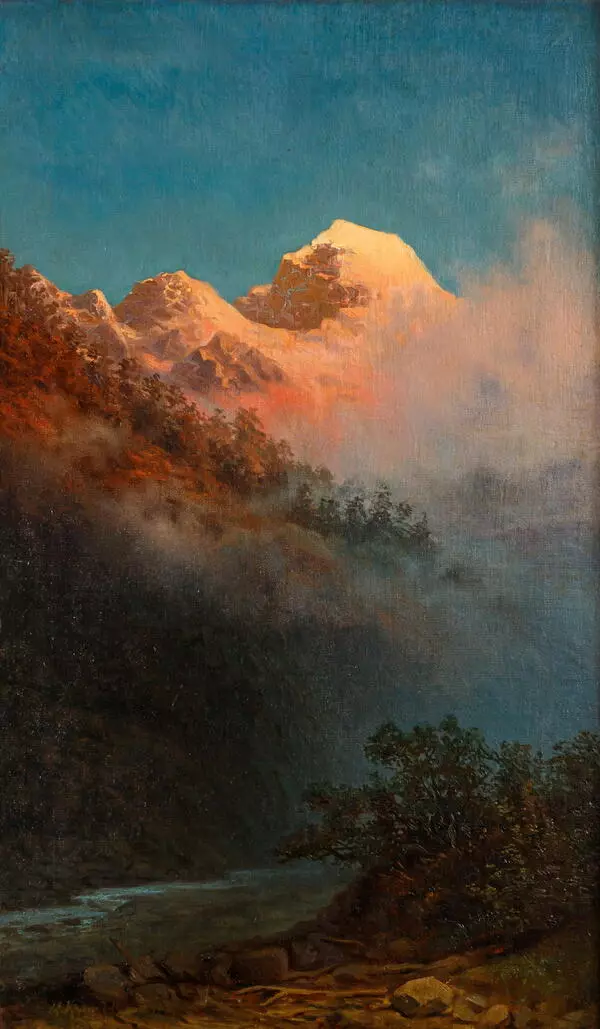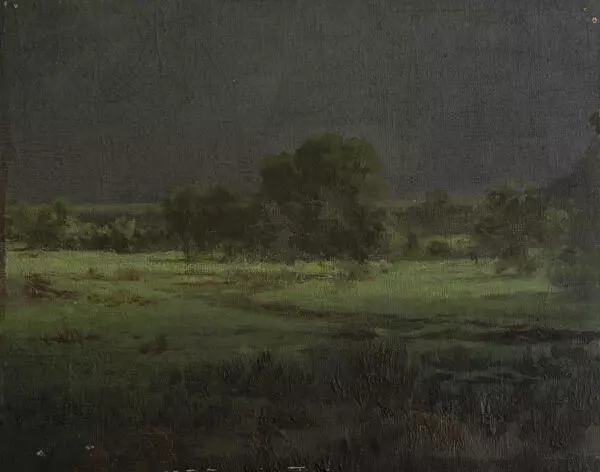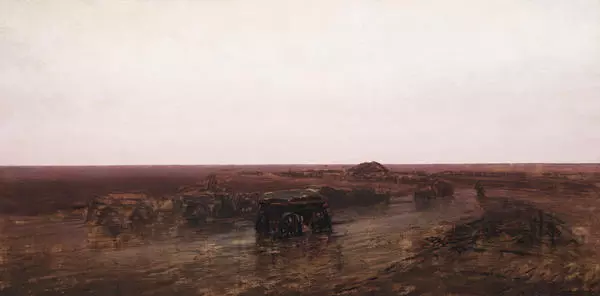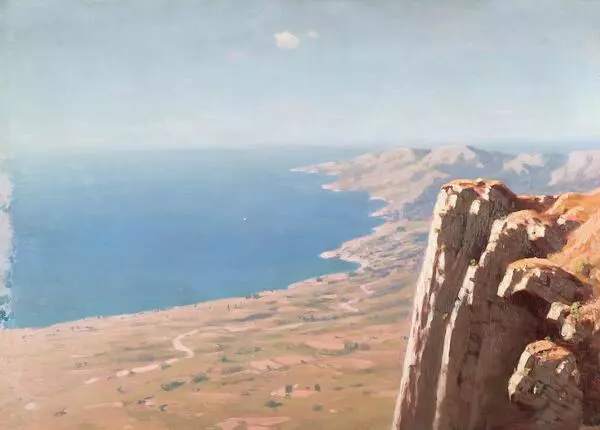Night on the Dnieper is, without a doubt, an outstanding canvas by Arkhip Ivanovich Kuindzhi. The artist worked on it for almost the entire summer and autumn of 1880.
Even before the masterpiece was officially presented to the public, the fame of the mystical and enchanting beauty of the art piece greatly excited Petersburgers. Crowds of curious people would gather at Kuindzhi’s studio to see, at least out of the corner of their eyes, the legend that ignited so many rumours. Exactly 2 hours a week, on Sundays, the studio of Arkhip Ivanovich was open to visitors.
The guests of Kuindzhi’s studio included I. Turgenev, I. Kramskoy, D. Mendeleev and other famous people. At a dinner party, Turgenev expressed such strong admiration for the painting that it caught the interest of a member of the Imperial House.
One Sunday, the artist’s studio was visited by a very reserved person in a naval officer’s uniform. Seeing the yet unfinished picture, the man asked about the price. Kuindzhi tried to get rid of the visitor and named a colossal sum for that time — 5 thousand roubles. To his surprise, the man agreed without bargaining.
Even before the masterpiece was officially presented to the public, the fame of the mystical and enchanting beauty of the art piece greatly excited Petersburgers. Crowds of curious people would gather at Kuindzhi’s studio to see, at least out of the corner of their eyes, the legend that ignited so many rumours. Exactly 2 hours a week, on Sundays, the studio of Arkhip Ivanovich was open to visitors.
The guests of Kuindzhi’s studio included I. Turgenev, I. Kramskoy, D. Mendeleev and other famous people. At a dinner party, Turgenev expressed such strong admiration for the painting that it caught the interest of a member of the Imperial House.
One Sunday, the artist’s studio was visited by a very reserved person in a naval officer’s uniform. Seeing the yet unfinished picture, the man asked about the price. Kuindzhi tried to get rid of the visitor and named a colossal sum for that time — 5 thousand roubles. To his surprise, the man agreed without bargaining.
Arkhip Ivanovich did not recognize in the young man the grandson of Nicholas I, Grand Duke Konstantin Konstantinovich Romanov.
The exhibition organized in St. Petersburg surprised all visitors. The uniqueness of the event lay in the fact that there was only one work on display — Night on the Dnieper, and the author made sure to exhibit his masterpiece as effectively as possible. The windows of the room were covered with dark curtains and the picture was illuminated by an electric light beam. In the darkened room it made an incredible impression on people — it seemed that the whole room was flooded with bright silver moonlight.
Of course, such a furore caused distrust and envy. Sceptics looked at the picture with a magnifying glass, tried to find the backlight behind the picture conversing in whispers, suspecting Kuindzhi of being in cahoots with infernal forces. Some people said Arkhip Ivanovich, nicknamed ‘the artist of light’, used nacreous paint made somewhere in the east.
But, in fact, it was a matter of the genius and talent of the artist, who was interested in experimenting and finding the perfect combination of contrasting shades that created a fluorescent glow.
The exhibition organized in St. Petersburg surprised all visitors. The uniqueness of the event lay in the fact that there was only one work on display — Night on the Dnieper, and the author made sure to exhibit his masterpiece as effectively as possible. The windows of the room were covered with dark curtains and the picture was illuminated by an electric light beam. In the darkened room it made an incredible impression on people — it seemed that the whole room was flooded with bright silver moonlight.
Of course, such a furore caused distrust and envy. Sceptics looked at the picture with a magnifying glass, tried to find the backlight behind the picture conversing in whispers, suspecting Kuindzhi of being in cahoots with infernal forces. Some people said Arkhip Ivanovich, nicknamed ‘the artist of light’, used nacreous paint made somewhere in the east.
But, in fact, it was a matter of the genius and talent of the artist, who was interested in experimenting and finding the perfect combination of contrasting shades that created a fluorescent glow.
The first author’s version of Night on the Dnieper, 1880 today resides in the collection of the Russian Museum. Kuindzhi painted two more copies: one is held by the State Tretyakov Gallery, the second by the Simferopol Museum of Fine Arts.
I.Y. Repin, described the stunning success of the painting and how dozens of people were crying in front of the masterpiece in “solemn silence”. The artist said that the canvas simply enchanted the viewers, evoking the best feelings in them.
